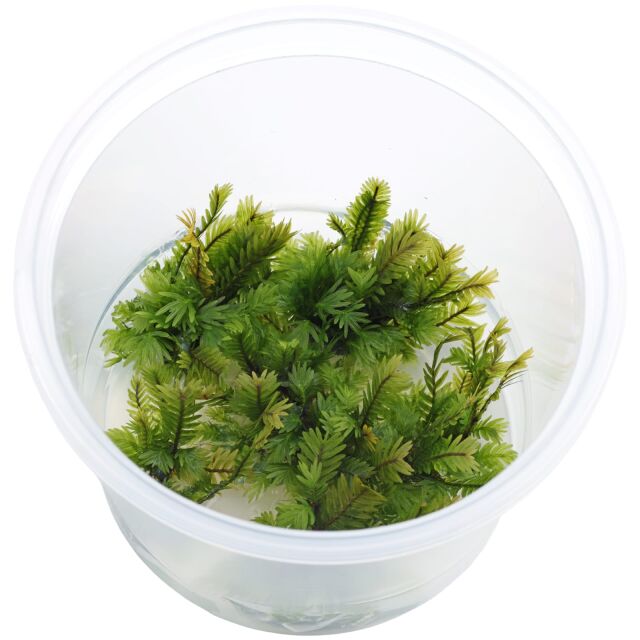


Fissidens nobilis
- Large, decorative Fissidens from Asia
- Feather-like, densely set with leaves
- Slowly growing
- Rarely in trade
Sign in or Register
Item question
We’re here for you!
Please enter your question and e-mail and we’ll contact you as soon as possible. It usually takes us up to 24 hours during business days to respond.
Thank you for your question!
Thank you, we’ll get in touch!
Close window
You already sent us a question.
Please wait a few minutes
Description
Fissidens nobilis is a very decorative, large moss. This striking Fissidens species is widespread in warm-temperate to tropical Asia, from India to Japan, Indonesia and the Fiji Islands. It colonises damp locations such as trickling rock faces and stream banks. The botanical name could be translated as "Noble pocket moss".
The feather-like, rigid shoots are approximately 3–5 mm wide, up to several centimetres long, deep medium to dark green and densely covered with leaves. In the terrestrial form, the shoots grow creeping to ascending. Although F. nobilis is not naturally an aquatic moss, it can grow underwater. The submerged shoots grow ascending to upright, are usually slightly narrower than in the terrestrial form, but equally rigid.
In the aquarium hobby, the name F. nobilis is sometimes mistakenly used for other species, such as Fissidens fontanus, which is very different from F. nobilis.
As an aquarium moss, Fissidens nobilis grows very slowly. We recommend moderate lighting, good water movement, a temperature of around 17 to 27 °C, CO2 addition and a complete supply of macro and micronutrients via the water. The shoots are best tied or glued to a substrate such as driftwood, stones or moss pads. Over time, a dense cushion develops, but it hardly attaches itself to the substrate. Old cushions with long shoots can therefore come loose and may need to be reattached. Light pruning promotes branching. Cut shoots can be reattached for propagation.
The deep green cushions of Fissidens nobilis look best on hardscape or as an accent in the foreground of the aquarium on moss pads and similar substrates. In humid terrariums and paludariums, it can be used in the landform, e.g. on damp back walls.
General information
Please choose a variant to see more information.
| Item no. |
|
| EAN | |
| Weight | |
| Shipping weight |
Customers ask customers
You have questions about this product? Ask other customer or our support team about this product!